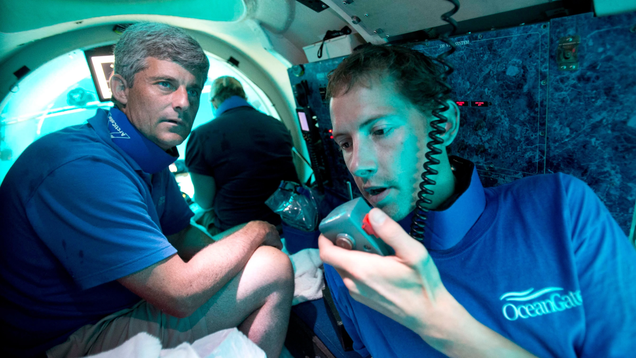The Tragic Journey of the Titan Submersible: A Cautionary Tale of Innovation and Oversight
The story of the Titan submersible, which tragically imploded during a dive to the Titanic wreck site, serves as a stark reminder of the complexities and dangers associated with deep-sea exploration. This incident not only claimed the lives of five individuals but also raised critical questions about safety, regulatory oversight, and the ethical responsibilities of those at the helm of such ventures.
Understanding the Risks of Deep-Sea Exploration
Deep-sea exploration is inherently fraught with risks. The ocean’s depths present extreme conditions, including immense pressure, frigid temperatures, and unpredictable currents. According to a report by the National Oceanic and Atmospheric Administration (NOAA), the pressure at the Titanic wreck site is over 3700 psi, which can crush even the most robust materials if not properly engineered.
In the case of the Titan submersible, the design and construction choices made by OceanGate, the company behind the vessel, have come under intense scrutiny. Investigations revealed that the submersible was constructed using materials that some experts deemed inadequate for the extreme conditions it would face. This raises the question: how can companies ensure that their innovations do not compromise safety?
The Role of Regulatory Oversight in Innovation
One of the most alarming aspects of the Titan incident is the apparent lack of robust regulatory oversight. The CEO of OceanGate, Stockton Rush, reportedly expressed a willingness to bypass safety regulations in pursuit of his vision for the submersible. In a shocking revelation, it was reported that he considered bribing lawmakers to facilitate the project. This behavior highlights a troubling trend in the tech and exploration industries, where the drive for innovation sometimes overshadows the imperative for safety.
Experts argue that a more stringent regulatory framework is necessary to ensure that companies prioritize safety alongside innovation. The National Transportation Safety Board (NTSB) and other regulatory bodies must adapt to the evolving landscape of deep-sea exploration, ensuring that safety protocols are not only established but enforced.
Lessons from the Titan Incident: A Call for Ethical Responsibility
The Titan submersible tragedy underscores the importance of ethical responsibility in the pursuit of technological advancement. Companies must prioritize the well-being of their clients and crew over profit and prestige. This incident serves as a cautionary tale for entrepreneurs and innovators across industries: the pursuit of groundbreaking technology should never come at the expense of human life.
In the aftermath of the Titan incident, industry leaders and policymakers are called to engage in a dialogue about the ethical implications of deep-sea exploration. This includes establishing clear guidelines for safety, transparency, and accountability. By fostering an environment where ethical considerations are paramount, the industry can work towards preventing future tragedies.
The Future of Deep-Sea Exploration: Balancing Innovation and Safety
As we look to the future of deep-sea exploration, it is essential to strike a balance between innovation and safety. The potential for scientific discovery and technological advancement in this field is immense, but it must be pursued responsibly.
Investments in research and development should prioritize safety innovations, such as advanced materials and real-time monitoring systems that can provide critical data during dives. Additionally, collaboration between private companies and regulatory agencies can help establish best practices that ensure safety without stifling innovation.
In conclusion, the Titan submersible tragedy serves as a powerful reminder of the responsibilities that come with innovation. As we continue to explore the depths of our oceans, it is imperative that we do so with a commitment to safety, ethical responsibility, and regulatory oversight. Only then can we honor the memory of those lost and pave the way for a safer future in deep-sea exploration.

